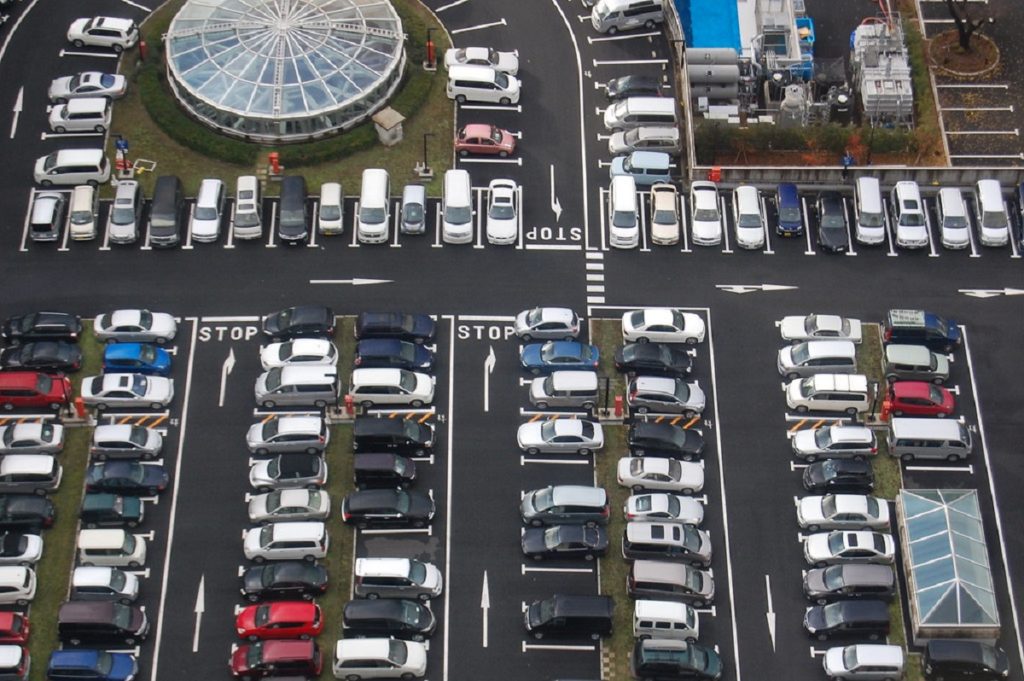We’ve all gone through the process of going around parking lots for minutes to look for any vacant slots. After finally finding one down, you see your vehicle is ill-fitted because the jerk-off in the SUV did a quickie and parked it sideways.
Ladies and gents, nobody cares if you’re validating a ticket or watching a 4-hour movie. The way you park speaks volumes about yourself, so don’t ever take it for granted.
While driving seems elementary, why does parking seem like a high-level function not all are qualified to perform?
If you’re in dire need of a tutorial, read on as we break down the basics of parking your car, so you don’t find yourself (or your car) the next shamed sensation on social media.
Skip to section
The Basic Parking Rules
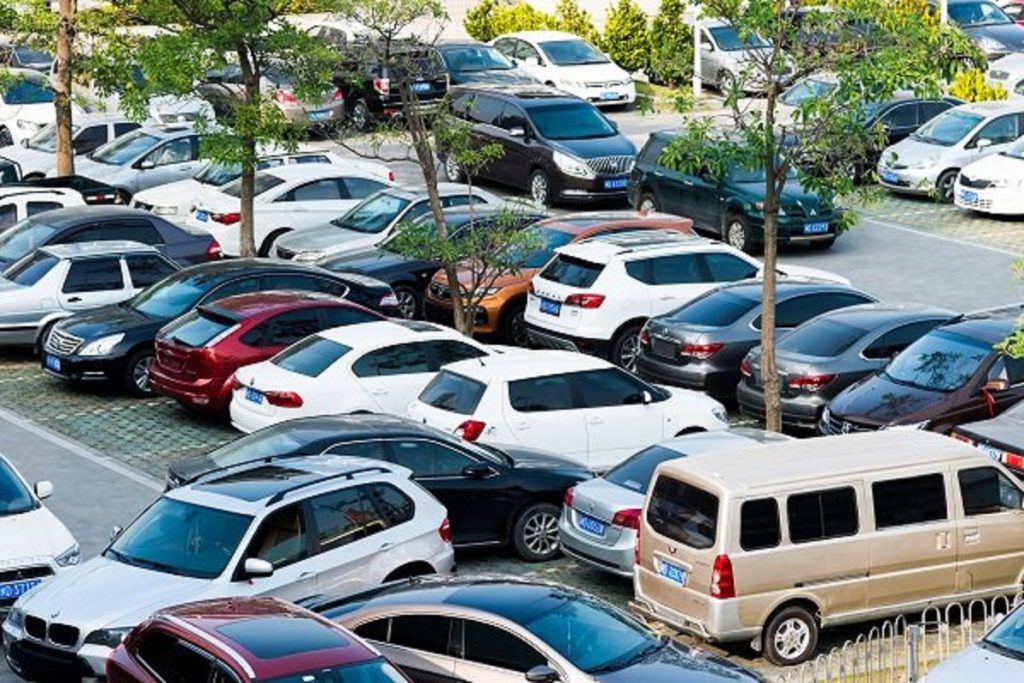
Parking is one of the most challenging tasks to complete when learning how to drive, at least for me. You must be able to do parallel parking, drive your way out of the spot carefully, and ultimately, learn the etiquette in parking.
Etiquette, according to most dictionaries, means:
the day-to-day code of polite behavior in society or among members of a certain profession or group.
Sadly, there’s no school for this.
Just like traffic, parking is now a piece of life for motorists anywhere you go: the mall, office, hotels, condominiums, etc., parking areas will always be there. If there are road rage incidents, parking occurrences could also lead to worse scenarios if not dealt with accordingly.
Why do these parking incidents happen? Simply because common etiquette is overlooked or seldom applied. Let’s start reading these basic parking etiquettes, shall we?
Pulling into a parking area
Try to look around for the posted speed limit as you drive in. Most don’t have any in this country, and you must apply common sense. Be careful of the vehicles backing out from a slot or people about to cross lanes from behind large SUVs.
Driving too fast will stop you from breaking on a dime to avoid an accident, so keep it slow.
Follow one-way lanes and stop signs.
Most parking areas set single-direction lanes per section to save space and maximize profit, often drawn by a large arrow painted on the pavement or symbols hanging from the ceiling.
Should these signs be faded beyond recognition, check the orientation of the cars along the lane. If they’re parked diagonally, it’s an obvious sign that traffic along that lane moves in only a single direction.
Obey the stop signs, particularly on corners, because you’re not the only one in the parking area, and you may not even hold a right-of-way.
Use turn signals
Just like when you’re driving on any road, use your turn signals while inside the parking area as you look for a vacant slot. Doing so lets the driver behind you know that you’re driving slow, not because you’re a newbie, but because you’re either pulling into an empty slot or turning into the next lane.
Park properly
It doesn’t have to be a work of art, but we’ve caught parking rarities that will make you go, “WTF!”
Some individuals may be geometrically-challenged, but you’re not landing the space shuttle. Even a one-eyed chimpanzee behind the wheel can determine between straight and diagonal lines.
Whether backing up or going nose first, put that thing close to perfect. People generally step out of their vehicles after parking, so they’ll require the proper amount of space to open their doors.
Parallel-parking? Get that as close to the curb as possible without bounding on it. It guarantees that no part of your vehicle is clinging out because if it is, the chances of it getting yanked off by passing traffic are very high.
If you can’t get it right in a two-point manner, practice because, as the popular saying goes, it ‘makes perfect.’
Also, we love the mid-size SUV for a practical reason. When it comes to parking, though, some slots seem narrower than usual, and for this case, don’t force the issue. If your fat truck or crossover is a tight squeeze, try to look elsewhere. That’s the price you pay for turning your back on hatchbacks.
Park only inside set spaces.
Just because all slots are loaded up doesn’t mean you can climb the curb and park your car there like the diva driver you are.
If you’re not a person with a disability (PWD) and your car doesn’t have a PWD sticker, don’t park on slots meant for the disabled. There’s a particular place in hell for people who do that, including those who obstruct disabled access ramps.
Striped areas are indicated for emergency vehicles like an ambulance and fire trucks, so don’t leave your car there unless you don’t care if it gets towed or tossed aside by burly dudes.
Also, driveways aren’t assigned parking spaces by any stretch of the imagination so just don’t.
No reservations
Parking spots are created to hold vehicles and should only be asserted by being driven into and not by a stand-in. It isn’t a hard-and-fast regulation by any measure, but bare common sense dictates that parking slots are on a first-come, first-served basis, and since you’re not a car, you can’t park yourself there to secure it; also, since you don’t own the place, you’ve got no reservation privileges.
Imagine having driven a fair part of an hour, spotting a slot only to see someone saying it’s reserved.
Let’s deprive this stupidity before everyone else begins bringing stand-ins to the mall to reserve parking slots during peak hours.
Do unto others…
If you despise dings on your doors, be cautious when you open your own. Don’t swing it like Babe Ruth but instead nudge gently, just like how you opened your Dad’s room in high school to steal the car keys for a night out.
A pissed-off car owner will surely retaliate, and even if your car isn’t there anymore, there’s always “karma”. Remember, ‘what goes around, comes around.’
Don’t be a creep
Lastly, don’t stalk someone to their vehicle. If you notice a person walking out to an entire parking lot, roll your window down and politely ask if they’re leaving.
People generally reply better to that than to a tinted car creepily following you around.
Fight the urge to exhibit your artistic side on the surface of a dirty vehicle. We understand it is inviting to stick your finger and write ‘Please clean me’ or draw a character from Pokemon, but it is a juvenile act, and it’s not like your car doesn’t get dirty every once in a while.
Parking in Neighborhoods
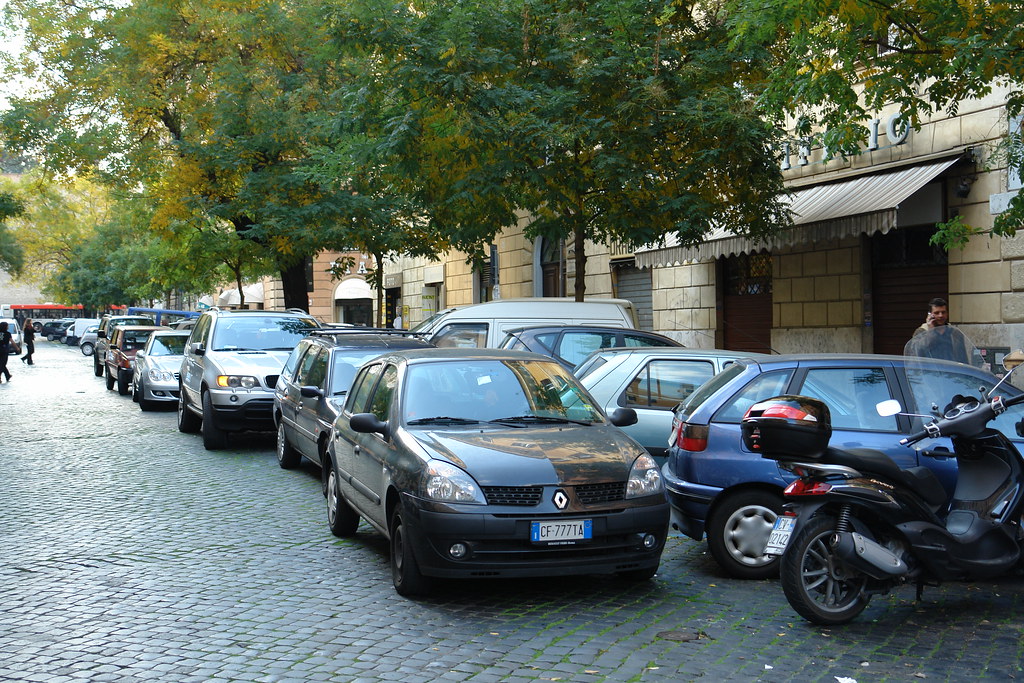
Sure we’ve all seen the videos: Cars being towed away after getting caught parking on the street, sometimes with their angry drivers screaming their heads off, and sometimes with the tow truck operators making their best impression of Solid Snake by sneaking in and taking a ride unknown to the confused owners. It has never been more rambling to park on the street, and we are just as puzzled as you are, but we will try to break it down as best as possible.
So how can you tell the laws that apply to your current city? The best way would be to orient yourself to the rules and regulations that apply to the area you plan to park in. For this, We’re here to help.
Parking on private property
All operable vehicles must be parked within a driveway, garage, or carport. An enhanced parking area that has been legally established on your property, other than the driveway, may also be utilized for parking. It incorporates all recreational vehicles and trailers (must be presently licensed).
Reminder: please do not park on blocking sidewalks or right of way.
The storage of scrap vehicles on private property is a public nuisance and is not permitted within city streets. You may place inoperable vehicles outdoors for no more than seven consecutive or non-consecutive days in any calendar year. No more than one unenclosed unserviceable vehicle may be on a property at any one time.
NOTE: This does not involve vehicles stored or parked lawfully on fenced private property in relation to the business of a licensed vehicle dismantler or licensed vehicle dealer and abides by the city provisions.
Parking on public streets
Vehicles driven regularly are allowed to be parked on a public street within the city limits for 24 hours. A car parked on city streets must be used regularly and, therefore, not be parked within any city’s right of way. Violations could end up in the vehicle(s) being towed at the owner’s expense.
Recreational trailers and motorhomes (without a provisional RV parking permit), boats/boat trailers, cars for sale, and abandoned/unauthorized vehicles cannot be parked legally on public streets, except temporarily, such as for active loading and unloading purposes.
RV parking permit
You must acquire an RV parking permit from the City if you have people staying temporarily at your property or on the street near your property, in a recreational camping trailer, motor home, or other RV. Each permit is suitable for seven days, with a maximum of 14 days per year per household.
Parking in The Workplace
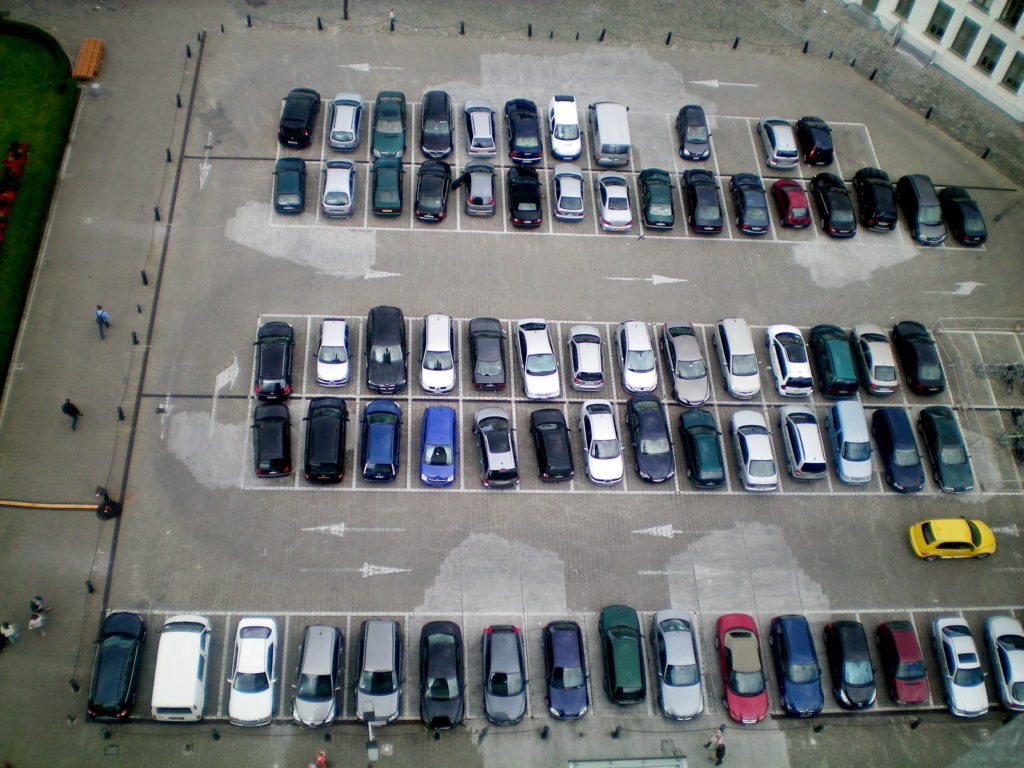
Where your employees park and how they park can enhance your company morale, make you an employer of choice, or lead to hard feelings among co-workers and dissatisfaction with management. Establish a clear parking policy for your employees and include advice on parking lot etiquette to ensure your workers positively start and end their days.
Assigning spots
Employees aren’t the only ones who require to observe parking lot etiquette. Simply conveying the best spots to a few executives can be cruel, create a visible caste system and produce morale issues. Determine any more desirable parking slots, such as those in the front row, undercover, or in a garage.
In addition to allocating these to key employees like bonuses, use one for an employee-of-the-month reward. If you have a pregnant employee, provide her with a spot near the door.
ADA requirements
The Americans with Disabilities Act establishes regulations for handicapped parking areas. Ignoring or breaking these guidelines can result in rigid fines for the parking lot owner or business leasing the lot.
Check with a qualified attorney to fix up your parking spaces correctly.
Diagonal parking
Avert diagonal parking as part of your parking lot policy. Some car owners park at an angle, consuming more than one space. They do this to keep others from parking close to them so they can avoid scratches.
It decreases the number of spots for others and can produce ill will among workers who don’t have expensive cars and make angle-parked cars prey for vandalism.
Customer parking
If you are a retail firm or regularly have customers, establish parking spaces near the front entrance for customers. Depending on the extent of your business, you may not require signs — just simply and politely ask your employees not to take the best parking spaces or specify which ones you want them to avoid.
Storing cars
If you have limited parking, do not permit employees to keep cars on your lot for more than a few days unless a car isn’t functioning and can’t be moved. If a car doesn’t start, let the employee know that it is required to be towed.
If the employee is taking an out-of-town business trip for a week, ask him to carpool to work or take public transportation instead of leaving the car in the lot for a week. It may not be practical, but if you have an employee who often travels, discuss the concern with him.
Employees should not conduct vehicle work in your parking lot, which is unappealing and can damage your image.
Designated areas
Don’t permit employees to park in areas not explicitly specified as parking spaces. It incorporates motorcycle parking in walkways or striped areas, or loading zones. Spots left unstriped may be set for people backing up or turning around.
Parking in non-approved spots near the entrance may create animosity among co-workers who have to stroll lengthy distances. It is incredibly annoying if an owner or executive is doing this.
Trash
Discourage employees from ditching trash from their cars in the parking lot. It includes leaving a coffee or soda cup on the ground outside their doors or chucking scraps of paper from their trunks on the ground. It makes your workplace look untidy and requires someone else to pick up their garbage.
Don’t permit employees to empty drinks into the parking lot since someone else may step in the liquid. Place several trash bins in your parking lot to lower this behavior.
Parking in Grocery Stores

Parking in a grocery store with a packed lot is one of life’s most significant stressors for most car guys. Car doors flying open, out of control shopping carts, careless drivers. As the saying goes, “war is hell”.
That’s in no small part since so many people are either clueless or completely disregard even the most essential rules of parking etiquette. If you or someone you know happens to be one of those, consider this the ‘holy scripture’ of polite parking.
Do not leave your shopping cart untethered
Just because it’s not moving right now doesn’t suggest it won’t with the next gust of wind. And a shopping cart with a good head of steam can cause a remarkable amount of damage. Place it in the shopping cart corral, or whatever you call it. At the very least, put the front wheels over a curb, so it doesn’t go anywhere.
Do not park unevenly.
Look, pulling into a parking spot at an uneasy angle happens. When it does, straighten out, or the poor person who parks next to you will be terrified that you’ll hit them on your way out.
Do not obstruct someone’s trunk or tailgate.
If you’ve run over the stripe by even a few inches, your hood might be hindering someone else’s ability to pack stuff into their car or truck.
Do not conceal your car by pulling in too far.
You know the feeling of driving through a parking lot and the comfort of finally finding a spot, only to discover a tiny car or motorcycle parked there right as you’re about to pull in. Stop early so that drivers can glimpse the rear of your vehicle.
Do park as far away from any other cars as you can
You’re lowering the odds that anyone will touch your car. The only exception: if someone else’s car is in the most isolated spots, it belongs to a fellow enthusiast. They’ll likely trust you to park close to them. Just not too close.
Do walk quickly if a person waves you by
When someone waves you past, they’re being polite more frequently than pursuing a requirement. Appreciate that nicety by getting out of the way in a reasonable time frame rather than skimping along with your slow, merry way.
Do not park in an electric vehicle charging spot if you do not have an electric car.
For this view, pretend your car’s just about to run out of gas and someone with a full tank pulled right in front of the only gas pump. Pretty thoughtless, huh?
Do grab any stray carts on your way in
You’re going to require one anyway, so you might as well clean up someone else’s mess simultaneously. The car you save might be your own.
Do not spit gum on the ground.
It sucks getting it out of your shoes. It’s even worse removing it out of your car’s carpet.
Do not creep someone for a parking spot.
Sure, following someone from the door to their car seems like a terrific way to locate a soon-to-be-open spot, but it’s also pretty creepy and threatening.
Do not touch someone else’s vehicle.
Don’t place a box down on someone’s trunk while opening your car door. Don’t place a flier on someone’s windshield. And do not write in the dirt of a dirty car. Okay, there’s one exception to this rule, and it’s placing one of these on an offender’s windshield.
Do not park across multiple spots.
There will be at least one space off on the side by a tree that’s a little wider than the rest in almost every instance. Look for it. Park there. Parking across multiple spots is imploring to get keyed by someone who doesn’t care about the rules above.
Do not park too close to someone.
If you park your car so close to someone that your door—or theirs—can’t easily open adequately for a reasonably-sized human to get in or out, you’re not just being a dick. You’re also contributing to the rising epidemic of door dings.
Do back out slowly
Even if you’re paying too much attention to your surroundings, there could be a car you don’t see coming down the aisle. If you hit their car, you’re the asshole.
Do turn your signal on if you’re going to grab a spot.
If the lot’s full and you have no other option but to park next to someone, turn your signal on (even if you’re not waiting for someone to back out). It’s just a flick of your finger, and it relieves a ton of confusion.
Valet Parking Etiquette
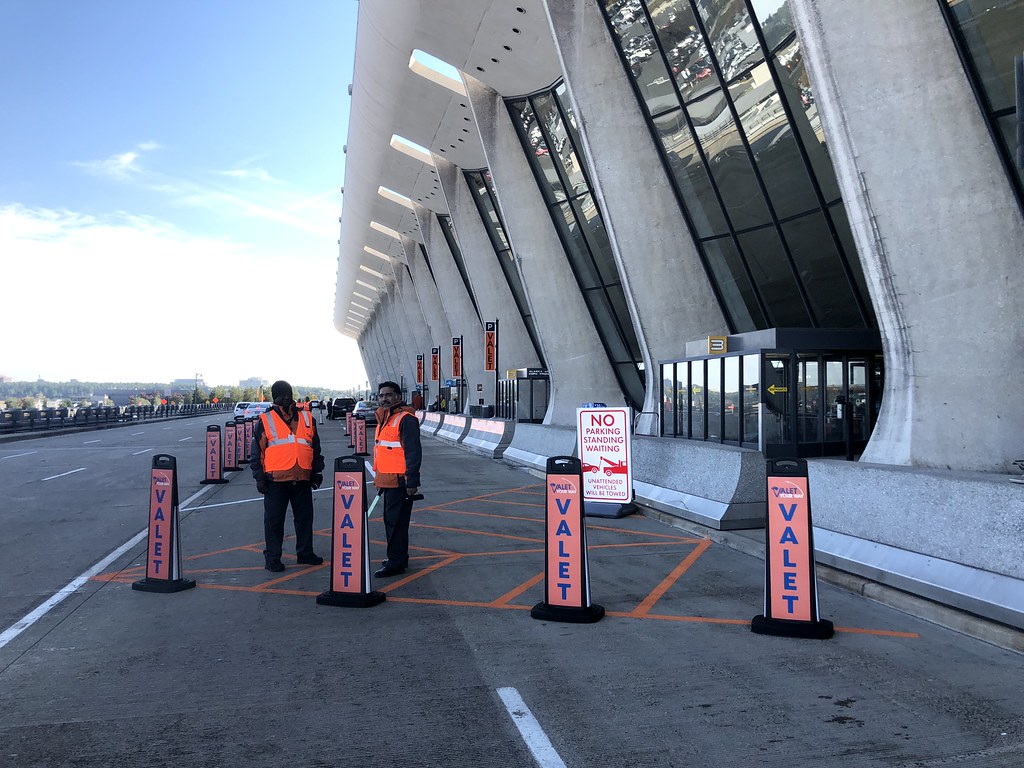
You’ve just pulled up to a five-star restaurant to discover that there’s valet parking. Do you have an idea what you’re supposed to do when you first arrive? How much should the valet parking tip be when they drive your car back to you after your meal? Is a tip required?
You’ve probably never provided many ideas on valet parking etiquette. Still, specific “unspoken rules” exist to make the process run more smoothly and reward valet staff for a job well done. And yes, valet tipping etiquette is essential. This part will clarify the proper etiquette for using valet parking services.
Upon drop-off
A valet parking operation is usually very fast-paced. The Art of Manliness suggests helpful tips so you can be a smooth, savvy valet parking user.
- Be attentive at the vehicle drop-off zone. Valets may be controlling traffic, so you should observe their instructions. Drive into the spot slowly and safely, and ensure you’re driving the right way.
- Tuck away or carry valuables with you before arriving at the valet stand. If you can’t bring them with you, place them in the trunk, but accomplish this out of sight of prying eyes.
- Bring only what you need for the evening. Don’t forget to bring your wallet, phone, purse, briefcase, tickets, etc. Otherwise, the valet attendant will be required to run back to your vehicle to retrieve it, and you’ll be obliged to tip them more!
- Leave your car running. Pulling keys from the ignition may pitch a wrench into the works, slowing them down.
- Please hand them the remote control fob. For cars that don’t contain mechanical locks, this is a necessity. It may also help find a vehicle in a crowded lot by flashing the lights or beeping the horn.
- Always wait for the valet attendant. Never leave your car unattended in the drive lane or valet area.
- Inform valet of vehicle abnormalities. It is only required if it may be an issue, such as a sensitive alarm system, cranky brakes, or a broken door latch.
- Keep your claim ticket secure. It is crucial. If your ticket is lost, it will take extra time to resolve so that they can retrieve your vehicle.
- Make sure to tip the valet employee who parks the car. Not everyone does this, but it may promote better service, such as a closer spot for quicker retrieval or additional care with the vehicle. If you’re asking how much to tip valet parking attendants, the normal amount is $2-5. Like waiters, they count on tips.
Vehicle pick-up
- Call ahead. It will save you precious time if you’re in a hurry, particularly if the valet lot is far away. It usually takes 10 to 20 minutes to retrieve a car at a busy hotel.
- Wait behind the other customers. Do this even if your car is parked “upfront.”
- Check your car for any damage or stolen items. It will be much more challenging to prove that something happened (and it was their fault) if you drive away and inform them about it later.
- Tip the valet attendant, even if the service is free. Valet attendants make a great deal of their income from tips. Again, the typical amount is $2 to 5. If they’ve delivered special services, like assistance with luggage, give them more. The whole valet parking tip should be about 20-30% of the service cost. Use whichever charge is higher.
Valet parking adds refinement to any establishment, and it’s a luxurious amenity for guests and patrons.
Motorcycle Parking Etiquette
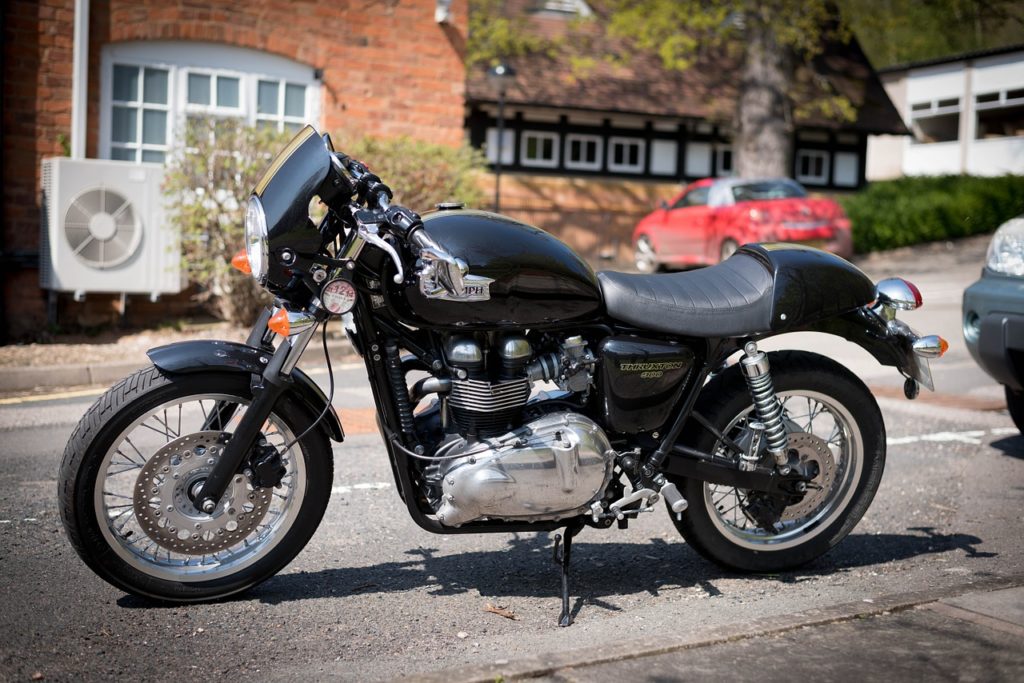
Riding a motorcycle furnishes a sense of freedom while on the road, and there’s no experience quite like it. Motorcycles have made transportation manageable for users and are lighter on emissions.
People think that the freedom they feel also applies to how they park their motorcycles. There is frequent confusion among motorcyclists about the right and wrong manner to park their bikes.
So, what is the appropriate motorcycle parking etiquette? Motorcyclists must generally tolerate the same parking rules as other motorized vehicles. It incorporates no parking on sidewalks or striped areas. Payment is needed in any paid parking lots or metered lots unless otherwise posted or mandated by the land or business owner.
A motorcycle enthusiast can take the liberty of researching the proper motorcycle parking etiquette to save someone out there from getting a parking ticket, hopefully.
Parking on sidewalks
It’s not unusual to see motorcycles parked on sidewalks, mainly at large businesses such as grocery stores or malls. If you own a motorcycle, you’ve probably done it yourself as well.
Most motorcyclists keep doing this because they “get away with it” and “haven’t given a ticket yet.” While this may be true, parking a motorcycle on any sidewalk is prohibited.
Motorcyclists think that because their vehicle is smaller, it doesn’t bother several people while on the sidewalk. They’d upset other drivers by taking up an entire parking spot anyway. No matter where you park your motorcycle, people will be furious about it, so you might as well do it lawfully and not risk getting a ticket.
Though numerous motorcyclists do “get away with” parking their bikes on sidewalks, they risk getting a hefty ticket (unless the business owner has approved them parking there).
You also risk irritating pedestrians that have close access to your motorcycle. If you cross the wrong individual, they may just “accidentally” bump it with their shopping cart. Kids will have no control walking around it, which could knock over your bike and hurt someone.
Parking by the curb
Often motorcyclists are left nowhere to park but besides the curb. Luckily, parking a motorcycle is legal as long as signs don’t indicate “No Parking” or the curb isn’t marked.
Be cautious when parking a motorcycle on the curb joined with busy streets. While it still may be permitted to park a motorcycle there, some drivers may be less mindful of motorcycles which could be unsafe for your bike.
When parking next to the curb, it’s best not to park your motorcycle completely parallel. There’s a tested and proper way to park in places like this that deliver the best results safety-wise for your bike.
Back your motorcycle up to the curb as the back tire touches it. Park at about a 45-degree angle, so you’re not parallel to the curb, but you’re not punching straight out. It delivers excellent organization if you’re riding in a group and park together and is also much more apparent to other drivers passing by.
Metered parking
Metered parking is often a hot discussion among motorcycle riders. There are a lot of misunderstandings about what you can and cannot do with a motorcycle in this type of parking situation.
Often motorcycle owners will park in between two cars parked in metered parking. Again, motorcyclists will repeatedly say they get away with this, but there are a lot of gambles when parked this way.
It is prohibited to park in between two cars parked in metered parking. Authorities may not see the motorcycle parked there, so several riders get away with doing that. However, if one of the cars moves, you’re considered parked in that space you didn’t pay for, promptly getting you a ticket.
The drivers you parked between may also get upset with the motorcycle. Metered parking is already packed because cities try to serve as many as possible for more revenue. Parking between two cars in metered parking gives both cars smaller space to get out of their parking spot. Your motorcycle may get bumped or knocked over.
Motorcyclists must pay when parking in metered parking unless it is otherwise assigned. If you are parking in metered parking curbside, follow the parking procedure previously noted about parking by a curb.
Parking in striped areas
You’ll also frequently see motorcycles parked in striped spaces of parking lots. As a motorcycle owner, you may have indeed done it so yourself. It may appear harmless to do so because your motorcycle doesn’t seem to be in the way of anyone.
Parking in striped areas with a motorcycle is also prohibited, and you will run the chance of getting a ticket. Again, several motorcyclists often claim to park in areas like this without getting a ticket. You risk obtaining a ticket, but it’s also highly unmindful.
Most striped parking spaces are for handicap access. All striped areas around handicap parking spots are set to provide disabled individuals the space to safely get in and out of their vehicles(more about this later).
Numerous patrons who utilize those parking spots are in wheelchairs and may be chauffeured by another driver. When wheelchairs are affected, that often demands a lot of space for the ramp to come out to let the person out safely. You can find wheelchair ramps on either side of the vehicle and the back.
Other striped areas of parking lots that are not covering handicap parking are still striped for a cause. That frequently implies a warning for other drivers not to drive on those lines or cut corners, but most of the time, other drivers don’t follow that. Parking a motorcycle on that spot will provide the chance of a car running right into your motorcycle.
Parking in regular parking spots
Numerous people ask if motorcycles can park in regular parking spots. It is absolutely legal and enables motorcycles to park in common parking spots just as any other motorized vehicle should.
Motorcyclists have voiced their fear of parking in regular parking spots because they’re terrified of making those driving a car angry for consuming so much space for such a small vehicle. Car drivers require a reality check because a motorcycle parked in a regular parking space is totally legal.
The second thing motorcyclists worry about parking in regular parking spots is the chance of a car not noticing it and pulling into the spot. While this is an honest concern, there are ways to park your motorcycle to get it seen quickly by other drivers.
While parking your motorcycle at an angle, don’t pull into the parking space. Leave the back tire out just enough for other car drivers to notice that the parking spot is taken, but not to the point where the tire is beyond the stall. For extra security, try placing a neon-colored flag on the back of your motorcycle.
Sharing parking with another motorcycle
There are a lot of queries about sharing a parking space with another motorcycle. A lot of this relies on the condition and where you are parking.
If you are parking in a regular, free parking space, sharing a parking spot with another motorcycle is acceptable. People appreciate it because that denotes one less parking spot taken up by a motorcycle.
If you notice another motorcycle parked in a free parking space but don’t know the owner, most motorcyclists approve that it’s okay to park your bike next to theirs as long as you don’t park in a way that blocks access to their motorcycle.
When it comes to paid parking, you are not allowed to share a parking spot with another motorcycle. Both will likely be ticketed if two motorcycles are parked in one paid parking spot. The city wants to create as much revenue as possible, and two vehicles in one spot are lost money.
Handicap Parking Etiquette
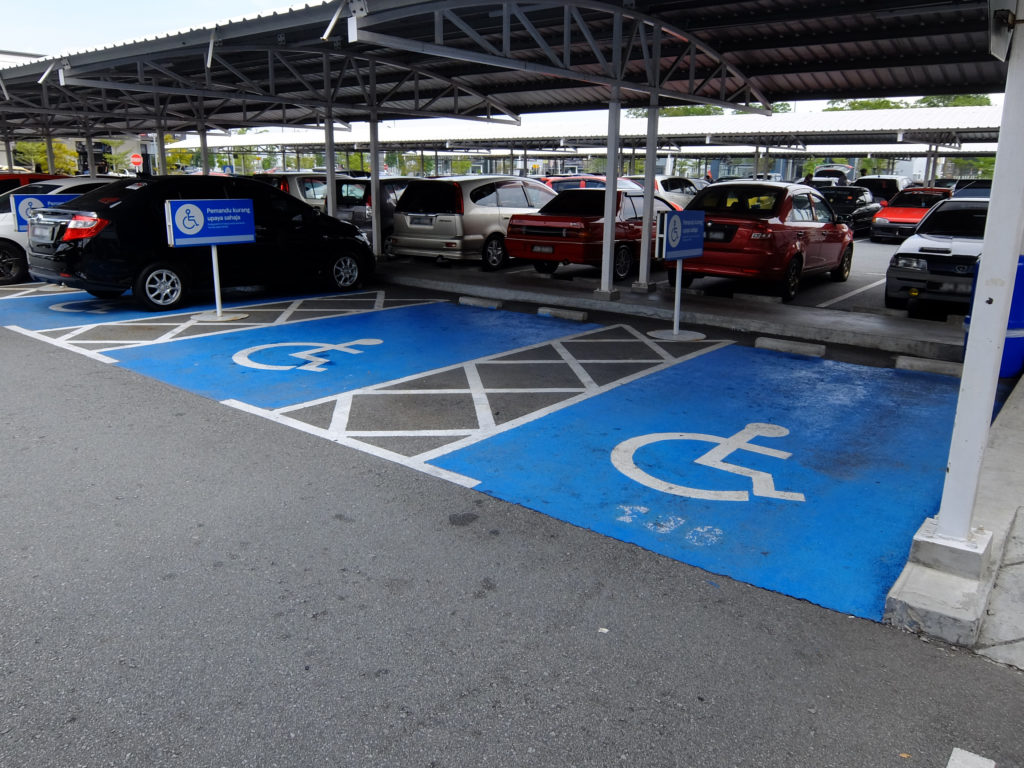
Handicap parking spaces are created to provide the disabled with the highest convenience. They’re made wide so that disabled people can alight and board their cars with ease, especially those in wheelchairs and other mobility aids. They’re also strategically positioned near mall entrances, so you’ll surely be tempted to park there, whether running in and out of the store or waiting for someone you’re fetching.
Any disabled person or driver with a debilitated family member who has been blocked from their assigned parking space by an inconsiderate (re: vile) individual understands how frustrating it can be to glimpse people without a handicap or those who ‘appear’ disabled utilize the accessible parking spot. Things will be easier if we include laws to resolve such predicaments. For instance, it would be helpful if we had government-issued stickers or badges for the vehicles of those with a disability.
Unfortunately, local ordinances concerning these parking spaces are outdated and need to be updated urgently. And so, more often than not, we are left to our own devices to determine which vehicles are permitted and which are not, and altercations are usually the result. For instance, one familiar point of view is whether should disabled motorcycle drivers should be allowed to park their bikes in handicap zones? There’s no exact answer to the matter.
That said, a minor consideration goes a long way. Because of the absence of clear-cut rules and regulations, and to provide our less fortunate brethren the access and comfort they deserve, be sure to practice proper etiquette around parking spaces labeled with the International Symbol of Access.
- Don’t park in a spot marked for disabled people unless you are a disabled person driving a car or have a disabled passenger inside a vehicle. Current laws on the matter, though outdated, still clearly note that:
“It is UNLAWFUL for any individual to park or stand any vehicle in any stall or space assigned or reserved for physically disabled persons.”
Also:
“Any vehicle operator who is not physically disabled is not allowed to use the handicapped parking space unless there is a physically disabled person in the vehicle or while the vehicle is being utilized to transport a physically disabled person.”
- Don’t use “I’ll only be just a minute” as a reason to park in handicapped parking spaces.
- It may be a tough pill to swallow if you are a motorcycle driver with a disability, but that parking spot is not intended for you. The spaces are denoted for four-wheeled vehicles, particularly those with passengers that need a wheelchair to move around. Plus, you can ride a motorcycle, indicating that you are independent and have adequate control of your legs. Offer that parking spot up for those with wheelchairs and who require assistance.
- You cannot place your motorcycle in the access lanes or the diagonally-striped rectangle on the sides of the handicap parking space. These spots have been specified to give those with wheelchairs and/or mobility devices a mode to get in and out of the vehicle. And if you park your motorcycle on them, they’ll have to wait for you to get back and take your bike out before they can go about their business.
Access Aisles: What Are They and Why They Exist
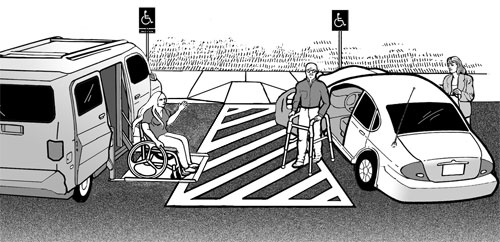
For many individuals with disabilities, access to aisles serves a vital purpose. These striped aisles next to an available (or handicapped) parking space supply extra room so people can safely and comfortably exit or enter their vehicles. The access aisle supplies room for people to:
- Drop their van’s ramp or lift
- Guide with wheelchairs, scooters, walkers, or canes
If even a tiny amount obstructs this area, a person with a disability who needs the extra space may not be able to get out of their vehicle.
Or, if a person with a disability sees a car parked on an access aisle upon her return, she may have to stay for hours until the violator moves his vehicle.
Access aisles are not made for emergency parking, as indicated in the violation above.
Accessible Parking Etiquette: Dos and Don’ts
Show your accessible parking permit.
It would be best to display your accessible parking permit when you park, including accessible parking placards or license plates. You may keep a permit that legally entitles you to utilize the space, but you could obtain a ticket if you don’t display it.
Do leave van-accessible parking spaces unobstructed for the ramp- or lift-equipped vehicles.
Van-accessible parking spaces maintain a more wide access aisle than usually accessible spots. The eight-foot-wide aisle delivers enough room for a person who utilizes a ramp- or lift-equipped vehicle to lower the ramp or lift, then drive safely in the area between cars.
A sign with the phrases “Van Accessible” and the international symbol of accessibility implies the parking space is created for the ramp- or lift-equipped vehicles* (RLEVs).
In contrast, access aisles established next to regular accessible parking spaces only measure five feet wide, which is insufficient for wheelchair users to safely exit or re-enter a vehicle equipped with a lift or ramp. In addition, there are more infrequent van-accessible parking spaces than standard accessible parking spaces in a parking lot.
Although you have the privilege to park in van-accessible spaces with your accessible parking permit, we still urge you to save van-accessible areas for RLEV users if you can locate a typical accessible parking space. Otherwise, RLEV users might not be able to locate a parking space at all.
Please stop using an accessible parking permit once it’s expired.
Accessible parking permits contain expiration dates. Please be aware of the expiration date of your placard or license plate, and stop using it after it’s expired. If you see yourself required to use it after expiration, apply for a new one or renew it.
Do not let others access your accessible parking permit when you are not present.
The owner of an accessible parking permit must be present when utilizing the permit. Do not lend your permit to any of your family members or friends so that they can use the accessible parking spaces. You and the individual who borrowed your permit might have legal consequences, which include paying a fine and revoking your permit.
*RLEV = Ramp- or lift-equipped vehicle
Please keep the access aisles completely unobstructed.
Even if you only parked over the aisle for a small amount of time, you could obstruct another person’s movement.
It might seem like access aisles surround a large area, but people with disabilities require all of the space to deploy their ramps or lifts. The wide aisle supplies ample room to drive on and off a ramp or lift.
So stay within the lines and honor the aisles!
Final Thoughts
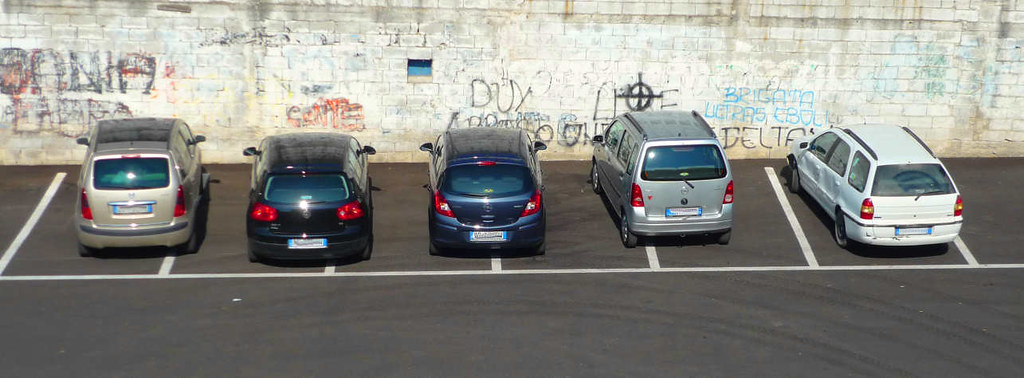
The most excellent guide to driver etiquette is there, from the second you start driving into a parking lot until the minute you step away from the premises.
It is ultra-comprehensive. It may appear like a lot, but let’s all live by it for respectability and everyone else’s sanity.
If we make it seem like current situations are barbaric, it isn’t, not by a longshot. But let’s be true to ourselves; there are isolated circumstances that look like it was parked by a two-year-old.
So unless you want to be included on the business end of the next trending photo, park it like a pro and let the others know that you learned it from us.
References:
- 11 Basic Tips for Parking Etiquette: https://www.wheninmanila.com/11-basic-tips-for-parking-etiquette/
- Park it like a pro: Proper etiquette for any parking lot: https://www.autoindustriya.com/features/park-it-like-a-pro-proper-etiquette-for-any-parking-lot.html
- What are the regulations for parking in front of establishments?: https://www.topgear.com.ph/features/tip-sheet/laws-parking-establishments-a44-20180613
- Good Neighbor Handbook – Parking in the Neighborhood: https://www.cityofvancouver.us/cmo/page/good-neighbor-handbook-parking-neighborhood
- Parking Lot Etiquette in the Workplace: https://smallbusiness.chron.com/parking-lot-etiquette-workplace-33558.html
- The Definitive Guide to Parking Lot Etiquette: https://www.thrillist.com/cars/the-definitive-guide-to-parking-lot-etiquette-15-dos-and-don-ts-to-live-by
- Valet Parking Etiquette: https://www.fcvalet.com/blog/valet-parking-etiquette/
- Motorcycle Parking Etiquette: 6 Things You Need To Know: https://motorcyclehabit.com/motorcycle-parking-etiquette-6-things-you-need-to-know/
- Handicap Parking Etiquette 101: https://ph.news.yahoo.com/handicap-parking-etiquette-101-090017976.html
- Accessible Parking Etiquette: Honor the Aisles!: https://rtcil.org/parking-etiquette
Sign-up now!
Start your digital nomad journey today!
